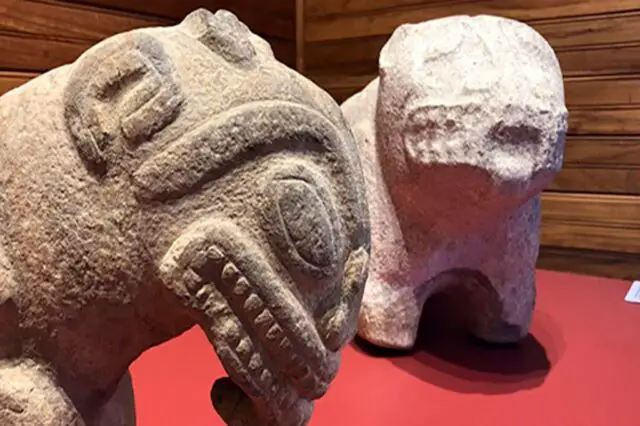The Legado en Piedra exhibition seeks to highlight the stupendous quality of the manufacturing of this material by the indigenous populations of Costa Rica, said Javier Fallas, curator of the exhibition.
In this new temporary exhibition at the National Museum of Costa Rica (MNCR), the visitor will be able to learn about the conservation and restoration that specialists from Costa Rica and Mexico carry out at the sites with stone spheres of the Diquís, specifically with the stone spheres, from El Silencio and Finca 6, Fallas said.
World Heritage Sites
Located in the Canton of Osa, in the province of Puntarenas, these two archaeological sites are among the four in Costa Rica declared World Heritage by the United Nations Educational, Scientific and Cultural Organization (UNESCO) in 2014.
Fallas highlighted that among the objects exhibited there are stone spheres and animal sculptures, made of different types of stones such as limestone or granodiorite, as well as some tools that the native peoples used to make the sculptures, found on the site.
With Legado en Piedra we also seek to show the research, conservation and restoration processes that the MNCR has carried out since 2017, in conjunction with the National School of Conservation, Restoration and Museography of Mexico and in association with other public and private entities in Costa Rica.

Protecting our cultural heritage
The work of protecting the heritage in its original site is a joint work between different disciplines such as archeology, engineering, biology and chemistry, explainedFallas.
Regarding the stone spheres in particular, he pointed out that they are a cultural heritage of past populations, a unique heritage not only for Costa Rican culture, but also international.
After maintaining that the spheres were made mostly with hard rocks, they suffer from natural aging, the curator exalted that, the legacy of the ancient inhabitants of the Diquís delta is very broad.
Masters of stone
Although their maximum representation are the spheres, however, they were true masters of stone work, he assured and added that associated with these monoliths, MNCR researchers found tools and animal figures in different types of rock, with finishes and details of a huge quality, which can be observed in this sample.

